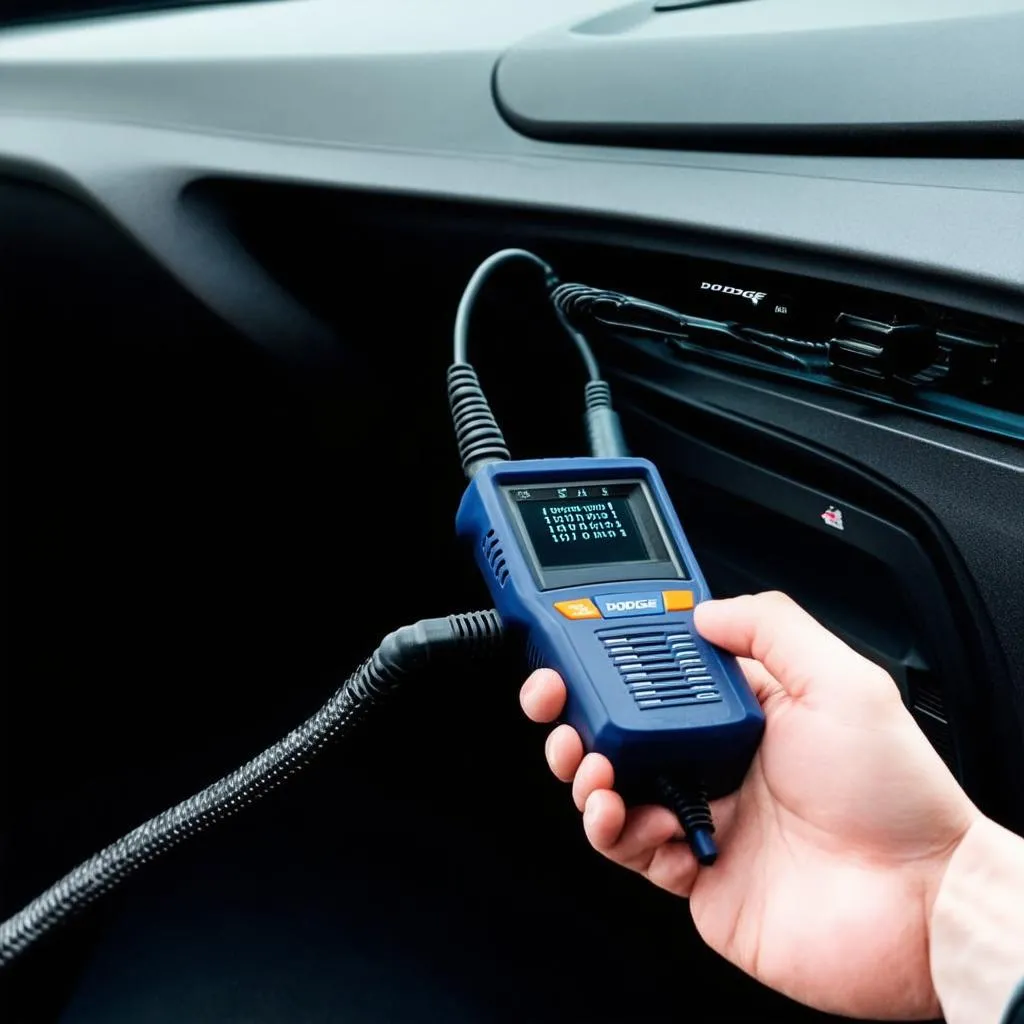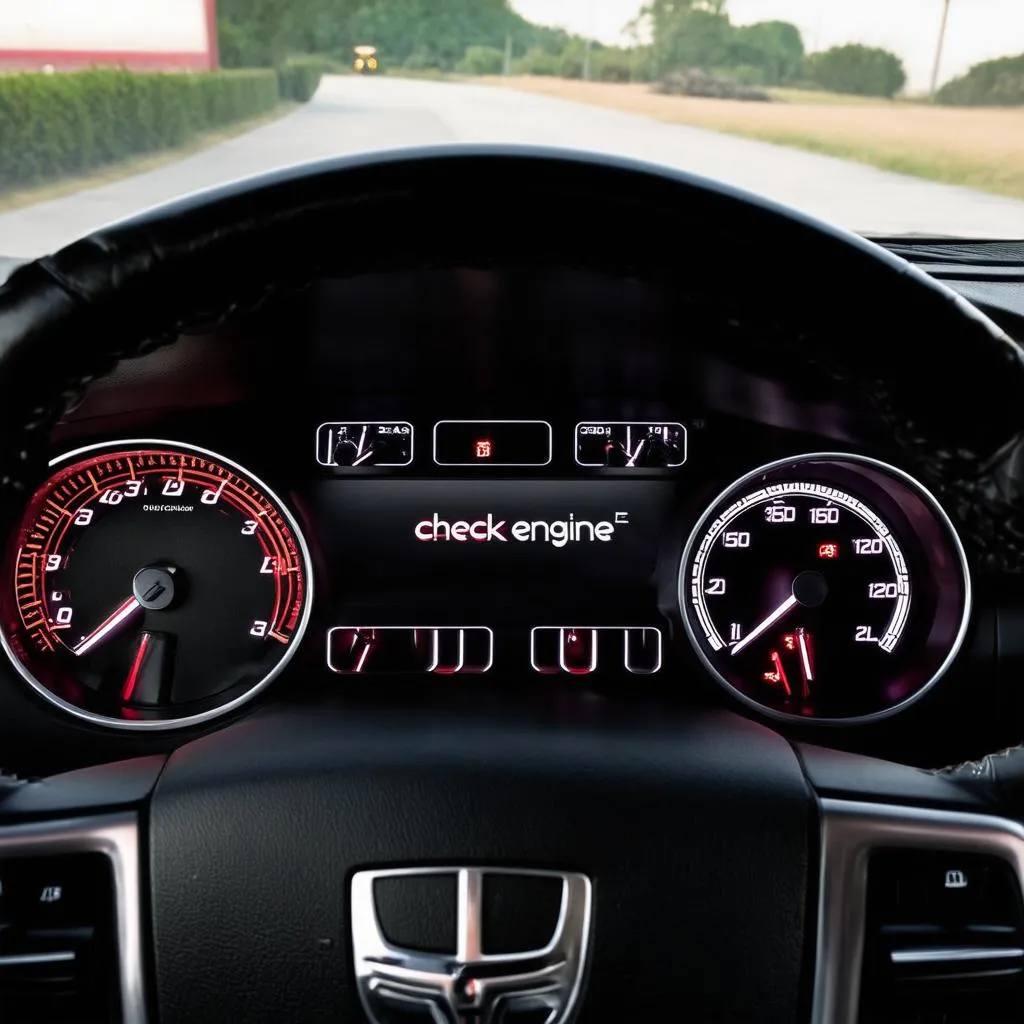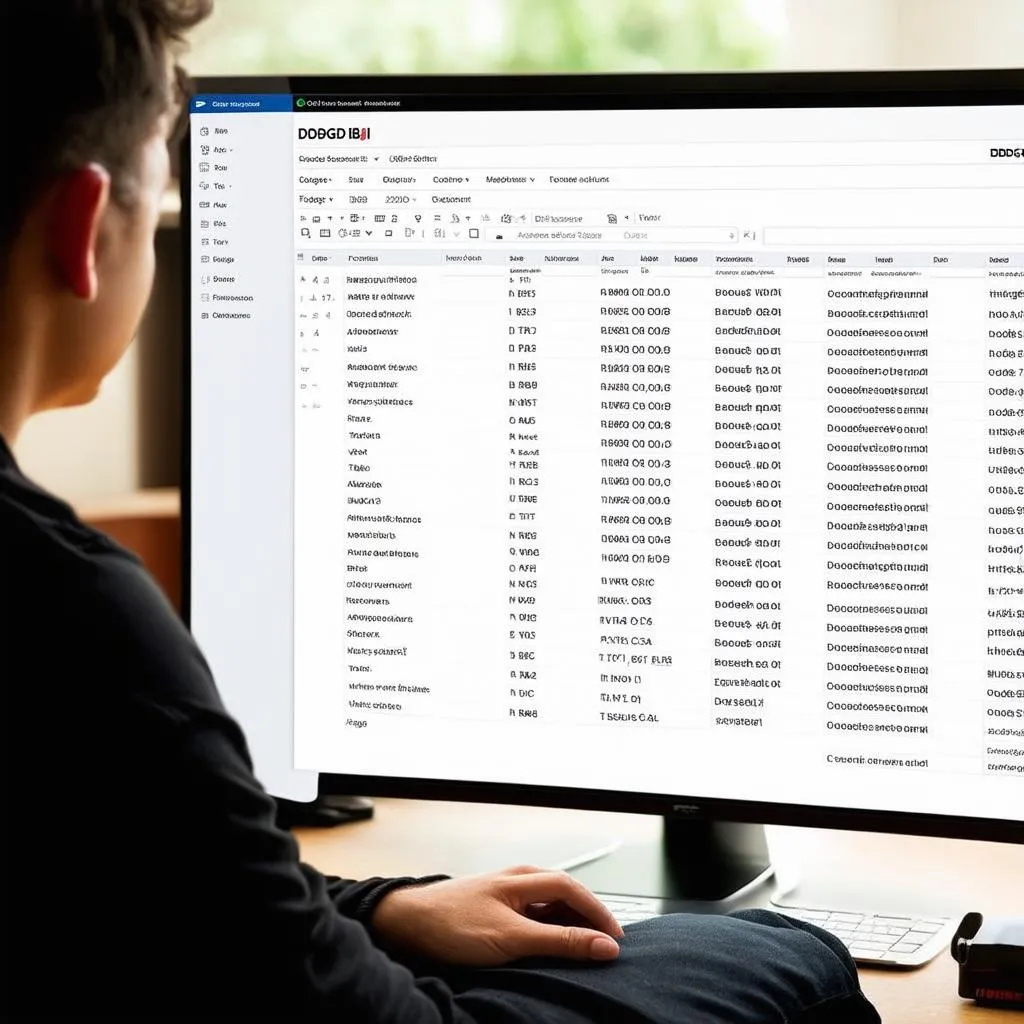Have you ever encountered a “Check Engine” light on your Dodge vehicle, leaving you wondering what’s going on? It’s like a mysterious message from your car, and you’re left trying to decipher its meaning. Fear not, car enthusiasts! This guide will equip you with the knowledge of Dodge OBD II codes, enabling you to understand those cryptic messages and take control of your vehicle’s well-being.
The Importance of Understanding Dodge OBD II Codes
OBD II codes are like a secret language your Dodge speaks. They hold valuable information about your vehicle’s health. Understanding these codes can help you:
- Identify potential issues early: Detecting problems early can save you from costly repairs down the line. It’s like catching a small fire before it turns into a blaze.
- Diagnose problems accurately: By understanding the codes, you can pinpoint the specific issue with your vehicle, making repairs more efficient. It’s like having a map to navigate the complexities of your car’s system.
- Save money: Being aware of potential issues allows you to address them proactively, reducing the chances of unexpected breakdowns and expensive repairs. It’s like investing in preventative maintenance to safeguard your car’s health.
- Empower yourself: Knowing how to interpret OBD II codes empowers you to take control of your vehicle’s maintenance. It’s like holding the key to understanding your car’s inner workings.
Dodge OBD II Codes Explained: A Step-by-Step Guide
What are OBD II Codes?
OBD II codes are a standardized way of communicating diagnostic information from your car’s computer (also known as the “Electronic Control Unit” or ECU). These codes are comprised of letters and numbers, such as “P0300,” which indicate specific faults or issues within your vehicle’s systems. Think of them like Morse code for your car, carrying vital messages about its health.
How to Access Dodge OBD II Codes:
- Locate the OBD II port: It’s usually located under the dashboard, near the steering column. It’s a 16-pin connector, like a small rectangular port with pins sticking out. Imagine it as the gateway to your car’s diagnostic system.
- Use an OBD II scanner: A scanner is like a translator for those OBD II codes. There are various types of scanners available, ranging from basic to professional-grade. A professional mechanic might use a high-tech scanner that resembles a tablet, while a DIY enthusiast might opt for a more affordable handheld device.
- Connect the scanner: Plug the scanner into the OBD II port and follow the device’s instructions. The scanner will then communicate with your car’s ECU and retrieve the diagnostic codes. It’s like plugging a USB drive into your computer to transfer information.
Reading and Interpreting Dodge OBD II Codes:
OBD II codes are typically classified into three categories:
- P-Codes: These refer to powertrain-related issues, such as engine, transmission, or emissions systems. Think of them as messages from the heart of your car’s engine.
- B-Codes: These deal with body control modules, such as door locks, lights, and windows. Imagine them as communication from your car’s comfort systems.
- C-Codes: These are related to chassis control modules, including the anti-lock braking system (ABS), traction control, and stability control. Think of them as messages from the car’s safety and stability systems.
To decipher the meaning of a Dodge OBD II code, you can consult an online database or use a dedicated OBD II code reader app. These resources provide detailed descriptions of each code and potential solutions. Imagine them as your car’s personal dictionary, helping you understand the language of the codes.
Common Dodge OBD II Codes:
Here are some common Dodge OBD II codes and their potential causes:
- P0171: System Too Lean (Bank 1) – This code indicates that the air-fuel mixture is too lean, meaning there’s too much air and not enough fuel. It could be caused by a faulty oxygen sensor, a leak in the intake manifold, or a clogged fuel injector.
- P0300: Random/Multiple Cylinder Misfire Detected – This code suggests that the engine is misfiring, potentially caused by a faulty spark plug, a worn-out ignition coil, or a problem with the fuel delivery system.
- P0420: Catalyst System Efficiency Below Threshold (Bank 1) – This code indicates a problem with the catalytic converter, which could be caused by a faulty oxygen sensor, a leak in the exhaust system, or a problem with the fuel system.
How to Address Dodge OBD II Codes:
- Clear the codes: Once you have addressed the issue, use the scanner to clear the codes. This will reset the check engine light. It’s like giving your car a clean slate after fixing the problem.
- Consult a mechanic: If you are not comfortable addressing the issue yourself, it’s advisable to consult a qualified mechanic. They can diagnose the problem accurately and perform the necessary repairs. Imagine them as your car’s doctor, providing expert care and treatment.
Frequently Asked Questions about Dodge OBD II Codes:
Q: What does it mean when the “Check Engine” light comes on in my Dodge?
A: The “Check Engine” light indicates that the car’s computer has detected a problem. It’s like your car’s warning system, signaling that something needs attention. To determine the exact issue, you will need to use an OBD II scanner to retrieve the corresponding code.
Q: Is it safe to drive my Dodge with the “Check Engine” light on?
A: It is generally safe to drive for a short distance with the “Check Engine” light on, but it’s best to address the issue as soon as possible. If the light is flashing, it indicates a serious problem and you should stop driving immediately.
Q: Can I reset the “Check Engine” light myself?
A: You can clear the codes using an OBD II scanner, but this will only address the symptom, not the underlying problem. If the issue persists, the light will come back on. It’s like temporarily silencing an alarm, but the fire still needs to be extinguished.
Q: How often should I check for OBD II codes?
A: It’s a good idea to check for codes at least once a year or whenever you notice a change in your car’s performance. It’s like a regular check-up for your car to maintain its health and catch potential problems early.
Q: What if I don’t have an OBD II scanner?
A: You can consult a mechanic to have them diagnose the codes, or you can purchase a basic OBD II scanner from an automotive store. Think of it as investing in your car’s well-being and gaining valuable diagnostic tools.
Conclusion: Dodge OBD II Codes: Your Gateway to Vehicle Intelligence
Understanding Dodge OBD II codes empowers you to stay on top of your vehicle’s maintenance, preventing costly repairs and ensuring a smooth driving experience. By using an OBD II scanner and consulting relevant resources, you can gain valuable insights into your car’s health and make informed decisions about its care. It’s like having a secret code that unlocks the mysteries of your Dodge, allowing you to understand its language and care for it with confidence.
Need professional support to diagnose and repair your Dodge? Our team of experts at Techcarusa.com is here to help. Contact us via WhatsApp: +84767531508 for 24/7 support and guidance.
 Dodge OBD II scanner
Dodge OBD II scanner
 Dodge check engine light
Dodge check engine light
 Dodge OBD II code list
Dodge OBD II code list